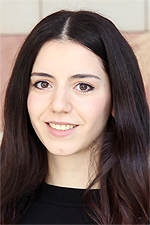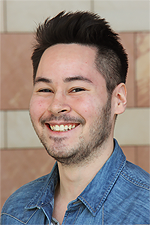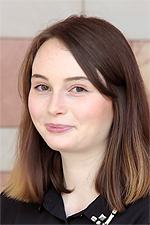
 A3.1: Caged puromycin
A3.1: Caged puromycin
This PhD student will focus on the uncaging mechanism of ortho-nitrobenzyl (oNB) type protecting groups and the optimization of these compounds for puromycin uncaging. Based on the Wachtveitl group’s recent studies on a photolabile puromycin synthesized by the group of Schwalbe with 4,5-dimethoxy-2-nitrobenzylchloroformiat (NVOC) as protecting group, one of the tasks of this PhD student is to work on improved cages. He/She will thus perform kinetic experiments to determine the timescale of puromycin photorelease by time resolved spectroscopy and IR-detection of photo-intermediates and -products, monitor the release kinetics of the nascent polypeptide chain and compare the results to in vitro folding data. He/She will test the performance of newly developed caging groups in time-resolved experiments (synthesis will be performed in PhD thesis B1.1). Specific tasks of this thesis are:
- Perform fs-time resolved transient spectroscopy on improved photocages.
- Comparison of the measured data with theory.
- Setup and characterization of a laser synchronization used for a gapless time-resolved detection of uncaging dynamics from the fs to the ms time scale.
- Test the applicability of the novel photolabile groups for the kinetic investigation of posttranslational folding event.
 A3.2: Two-photon and wavelength-selective uncaging
A3.2: Two-photon and wavelength-selective uncaging
The PhD student will work on novel types of two-photon cages consisting of a sensitizer (e.g. an efficient two-photon dye) / cage combination developed in PhD thesis A2.2. With ultrafast electronic spectroscopy this PhD student will follow the reaction pathways of wavelength-selective uncaging in the novel sensitizer/cage/effector triad tested as two-photon cages. In close collaboration with PhD thesis A1.3 (and with the advice by the associated research group of Dreuw) the PhD student will obtain with the help of quantum chemistry and vibrational spectroscopy a detailed picture of the uncaging kinetics and thus he/she can work in collaboration with A1.3 and A2.2 on the design of new two-photon cages. The PhD student will try to establish a method to classify photocages by two-photon excitation to identify efficient two-photon activatable photocages. In addition to the two-photon cages the PhD student will study the photocleavage of spectrally shifted cages. Color tuning of the photolabile group allows constructing multiply caged compounds that can be converted to the active molecule in a sequential fashion. This will be a key technique for the central aim of this RTG to develop complex uncaging scenarios, indispensable for the synchronized observation of multi-step reaction sequences.
 A3.3: Kinetic separation of folding and association dynamics triggered by differentially caged ATP
A3.3: Kinetic separation of folding and association dynamics triggered by differentially caged ATP
This PhD thesis will be a mechanistic and kinetic study on larger biological systems and thus represents a direct application of the principle of wavelength selective, sequential uncaging described above. The PhD student will learn and use different time-resolved techniques including time correlated single photon counting and rapid scan FTIR spectroscopy to obtain a complete picture of the sequential processes of helicase binding and RNA unwinding that are expected to occur on a nested hierarchy of time scales.
In close collaboration with PhD thesis B2.1 the PhD student will perform photochemical and kinetic experiments on differentially caged ATP molecules. The site-specific introduction of a photo-removable roadblock into the target RNA is a prerequisite to kinetically disentangle association and propagation of the helicase. After photoinduced removal of the road-block, the propagation of RNA unfolding can be spectroscopically probed either by FTIR or by time-resolved fluorescence spectroscopy. In combination with the NMR studies performed in PhD thesis B2.1, this integrated approach should lead to a detailed molecular picture of the complex reaction sequence of RNA unwinding.
The second part of this thesis is also focused on the functional dynamics triggered by the release of ATP. The PhD student will be responsible for the spectroscopic characterization of response of diacylglycerol kinase incorporated into lipid cubic phase (LCP) upon ATP uncaging developed in PhD thesis B3.1.
A3.4: Wavelength-selective on/off cages for in cell applications
In the first term of CLiC Lisa-Marie Herzig (A3.1) focused on the uncaging mechanism of caged puromycin. The compound was synthesized by Isam Elamri (B1.1) with DEACM (7-diethylaminocoumarin) as photolabile protecting group. In ultrafast pump/probe experiments and steady-state measurements both in UV/vis and IR, the uncaging mechanism for this DEACM-protected puromycin could be unraveled and published. Together with the Schuman group (Max-Planck-Institute for Brain Research, Frankfurt) the system was successfully investigated in cellular surrounding, where DEACM-protected puromycin shows favorable uncaging dynamics compared to earlier studies.
To extend the toolbox of caged compounds for biological applications, on/off- (i.e. doubly caged) systems are currently devised in the Schwalbe group. They allow not only a triggered activation but also a sharp deactivation of bioactivity. In continuation of earlier work, we will develop an illumination scheme, where a doubly caged puromycin can be sequentially uncaged and observed in a time resolved fashion. In close collaboration with the Schwalbe group design strategies are currently being developed and tested, spectroscopic characterizations will guide the synthesis in this project. Methodologically, time-resolved IR measurements will be central to report both the typically ultrafast uncaging dynamics and the much slower biological response. Therefore, we want to set up a laser synchronization for gapless time-resolved detection from the femtosecond to the millisecond time scale.
A3.5: Multiphoton processes and photocontrol of biochemical reaction pathways
Two-photon uncaging is an approach that combines excellent spatial resolution with favorable spectroscopic properties for biological applications including deep tissue penetration of near-IR light. In the first round of CLiC, Andreas Jakob (A2.2) synthesized a novel type of two-photon cage, consisting of a photolabile group and an efficient two-photon dye. Christopher Hammer (A3.2) performed ultrafast UV/vis pump-probe experiments and determined two-photon cross sections to assess the properties of the novel two-photon compound. With this approach it was able to derive a detailed molecular picture of the uncaging pathway.
Based on these results and in close collaboration with theory (A1) and organic synthesis (A2) we plan to design and characterize novel two-photon cages with improved efficiency. These compounds will be based on the modular design principle of a light harvesting two-photon absorber and a photolabile acceptor. In this project the PhD student will study with ultrafast vibrational and electronic spectroscopy the uncaging reactions of these compounds in oligonucleotides and peptides as specified in the proposal for PhD theses A2.6 and B1.4 (organic synthesis and NMR). These systems will be designed to be strongly wavelength-selective and comprise large two-photon cross sections. The PhD student in this project will gain excessive knowledge in biomolecular ultrafast spectroscopy by establishing the methodology and applying them on biochemical systems. In particular, the work will focus on performing nonlinear femtosecond time-resolved electronic and vibrational spectroscopic experiments. Furthermore, the understanding of principles of organic synthesis and quantum chemistry and participating in the design of optimized compounds with cooperation partners inside the CliC graduate program are a substantial part of the PhD student’s work.
A3.6: Photoresponsive hybrid systems for enhanced photochemistry
In the first round of CLiC, Dinh Du Tran (A3.3) focused on the kinetic analysis of larger biological systems. In close collaboration with Heidi Zetzsche (B2.1) a DEAD-Box helicase from E. coli was investigated using fluorescently labelled target RNA molecules. By combining high-resolution NMR with time-resolved and steady state fluorescence experiments the unwinding mechanism and efficiency of different RNA strands were investigated.
In the second term the use of fluorescently labelled RNA model strands will be continued in collaboration with PhD students of the Schwalbe group. These new strands will contain an aptamer sequence. Additionally, together with the new PhD students of the Schwalbe and the Heckel groups, photoresponsive RNA model sequences will be studied with the aim to understand the role of cations in conformational dynamics. Therefore we perform steady-state and time-resolved fluorescence experiments to follow the cation induced mechanism of these large biological systems.
Furthermore, we plan to design a new hybrid system containing a photocage attached to the surface of a QD to expand the toolbox of photoactivatable molecules with regulatory potential. We choose QDs since their high two-photon cross-section makes them an attractive antenna compound. This project will be performed in close cooperation with the Heckel group (A2.6). The quality of the synthesized QDs as two-photon absorbers will be studied by the determination of the GM value. Therefore we plan to perform two-photon excited fluorescence experiments on the QDs. The used photocages will be synthesized by the PhD student A2.6. To characterize the photodynamics of the uncaging mechanism TA and TCSPC/Kerr-shutter measurements will be performed.



